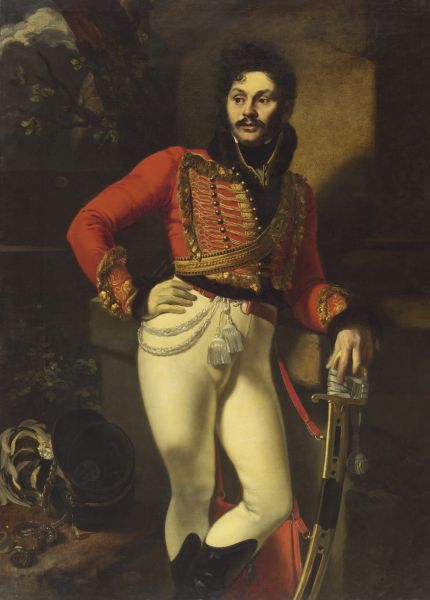|
|
Portrait of Life Guard Colonel Yevgraf Davydov. 1809

Kiprensky Orest,
Oil on canvas
162 x 116
State Russian Museum
Annotation
The portrait is Orest Kiprensky’s most famous canvas and a specific manifesto of the art of the Romantic era in Russia. It was one of the works for which Kiprensky was made an academician in 1812.
Yevgraf Davydov (1775–1823): Sergeant major of the Life Guards Cavalry Regiment (1791), cornet of the Life Guards Hussar Regiment (1799), colonel (1807). Fought in the Napoleonic Wars at the Battle of Austerlitz (1805) and the Battle of Ostrovnoye near Vitebsk (1812).
Lost his left leg and right arm beneath the elbow at the Battle of Leipzig (August 1813), awarded the Order of St George (3rd class), the Order of Leopold of Austria, the Order of the Red Eagle of Prussia (2nd class) and promoted to the rank of major-general.
Author's Biography
Kiprensky Orest
Kiprensky, Orest Adamovich
1772, Nezhinskaya (St Petersburg Province) - 1836, Rome
Portraitist, history painter, draughtsman. Illegitimate son of a serf woman, Anna Gavrilova, who gave him the name Kipreisky, later changed to Kiprensky. Grew up in the family of his foster father Adam Schwalde. Emancipated from serfdom and enrolled in the Imperial Academy of Arts (1788). Studied history painting under Grigory Ugryumov and Gabriele-Francois Doyen. Fellow of the Imperial Academy of Arts (1803-09). Worked in St Petersburg, Moscow and Tver. Academician of portrait painting (1812), councillor of the Imperial Academy of Arts (1815). Contributed to the exhibitions of the Imperial Academy of Arts. Lived in Italy (1816-23, 1828-36). Contributed to the Paris Salon (1822). Donated Self-Portrait (1820) to the Galleria degli Uffizi in Florence (1825). Appointed second-class professor of history and portrait painting with automatic member¬ship of the nobility (1831). Councillor of the Accademia di Belle Arti in Naples (1831). Buried at Sant'' Andrea delle Fratte in Rome.

